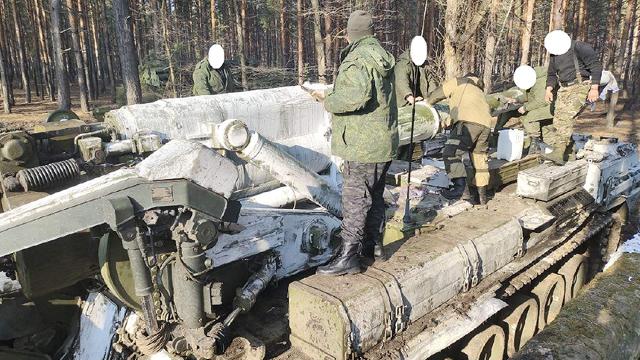A new material for camouflage of tanks, self-propelled guns and other types of weapons was tested in the area of the SVO
Russian scientists have created a thermal insulation coating "Teplosphere" based on polyurethane — it makes it difficult to detect military equipment using thermal imagers, the Center for NTI "Digital Materials Science" told Izvestia. Field tests conducted in the SVO zone have shown the effectiveness of this method of camouflage. Kamikaze drones with thermal imagers are a big problem for armored vehicles, and creating protection against their attack can have a noticeable effect, experts explained.
Hide from the thermal imager
The thermal insulation coating "Teplosphere" based on polyurethane will help solve the problem of detecting military equipment using thermal imagers, in particular those installed on UAVs, its developers from the NTI Center "Digital Materials Science: New Materials and Substances" of Bauman Moscow State Technical University told Izvestia.
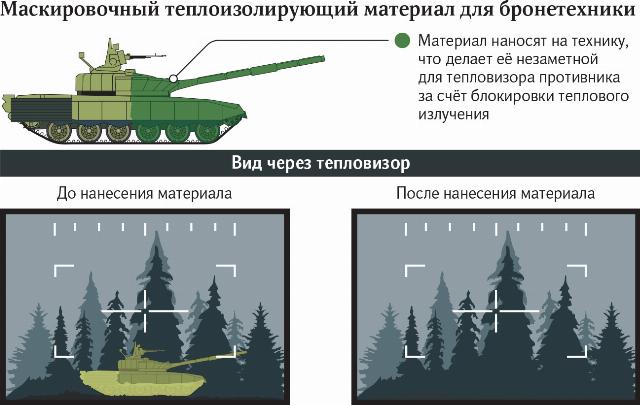
Field tests conducted in the SVO zone showed that due to the use of the "Thermosphere", armored vehicles do not stand out against the general temperature background of surrounding objects, and it is almost impossible to uniquely identify them with thermal imagers.
Polyurethane and hollow glass microspheres from Russian manufacturers served as the basis of the material. The composition is a filled two-component polyurethane mastic with an adjustable curing rate in the temperature range from -20 to +40 degrees Celsius.
— Polyurethanes have high deformation and strength properties (frost resistance, wear resistance) and have high adhesion to surfaces of various materials. Mastic based on them has the ability to liquefy from mechanical action and increase viscosity at rest, so it can be applied to vertical and inclined surfaces manually or, after a slight dilution with a solvent, in a mechanized way using airless spraying devices, — Alexander, Deputy director of the Center for NTI "Digital Materials Science" of Bauman Moscow State Technical University, told Izvestia Kalinnikov.
Such thermal masks can be used for a wide range of weapons — from cars to heavy armored vehicles. Field tests have already been carried out on tanks, armored personnel carriers, self-propelled artillery installations, and various motor vehicles.
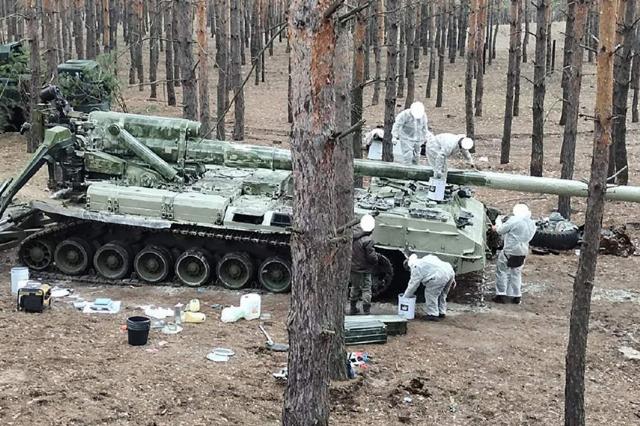
Application of TKP
Image source: Photo: NTI Center "Digital Materials Science: New Materials and Substances" Bauman Moscow State Technical University
The "teplosphere" can also be used in the civil sector, for example, for the insulation of habitable construction sites of complex configuration in the conditions of the Far North and the Arctic.
The issue of the active introduction of thermal insulation material is currently being discussed.
The pros and cons of polyurethane
Masking thermal insulation materials work by absorbing, reflecting or scattering thermal radiation, explained Ivan Manaev, Deputy General Director of the Composite Valley company. They are of critical importance for the protection of special equipment, allowing objects to be hidden from detection using thermal imaging devices.
According to experts, the characteristics of the coating are not bad, but there is a question about its incombustibility.
— Polyurethanes burn and the question is how much to add a non—flammable filler so that there is no self-sustaining flame, - explained Denis Anokhin, senior researcher at the Chemical Faculty of Moscow State University. — The coating will also need to be updated periodically, since polyurethane does not like moisture and decomposes from water and the sun. The chemical and mechanical stability of this substance is important so that it does not collapse from impacts, dirt and sand.
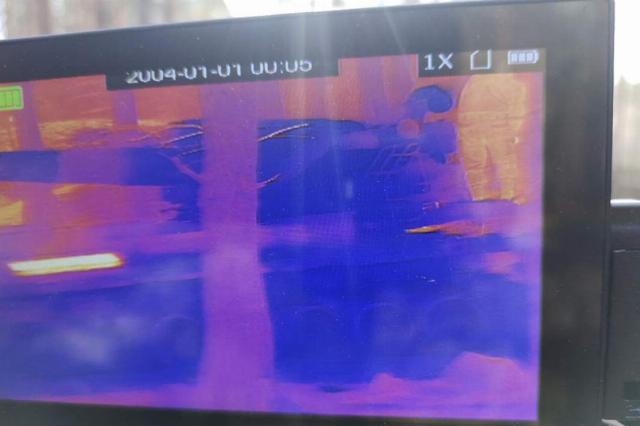
An image from the screen of a hand-held thermal imager. The image shows the exhaust grille and the man in contrast. The body of the ACS, covered with TP, is hardly noticeable against the background of the environment
Image source: Photo: NTI Center "Digital Materials Science: New Materials and Substances" Bauman Moscow State Technical University
This material is not innovative, other scientists note.
— Polyurethane is the main component of thermal insulation mounting foam. Its combination with hollow microspheres will improve thermal insulation properties. But the positive effect of using such material should be evaluated by specialists based on the results of field tests," said Denis Mordasov, Head of the Materials and Technology Department at Tambov State Technical University.
Mounting foam also has disadvantages, said Sergey Baskakov, head of the Nanomaterials Spectroscopy Group at the Research Center for Problems of Chemical Physics and Medical Chemistry of the Russian Academy of Sciences. It has a difficult-to-control expansion: the thickness is further adjusted by trimming the hardened foam. In addition, flammable gases, such as propane, are used for foaming.
The proposed technology of using glass spheres as a thermal insulation additive is an interesting solution that can be used in the field of polyurethane—based thermal insulation materials for both domestic and special purposes, the expert believes. But the most difficult problem may be to avoid overheating of equipment in motion under such a coating.
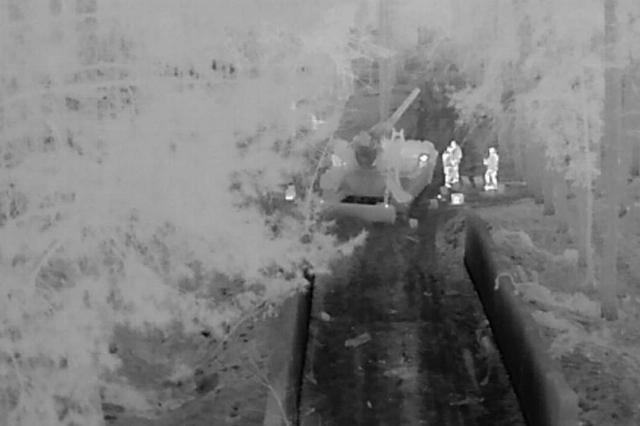
A photo from the drone's camera at a medium distance. It can be seen that the exhaust grille and people stand out
Image source: Photo: NTI Center "Digital Materials Science: New Materials and Substances" Bauman Moscow State Technical University
— The engine, the internal mechanisms of the equipment, the fire control systems and even the crew emit a lot of heat in total, and this heat remains under the coating in a closed circuit. And there is a danger of overheating and equipment failure, — said the associate professor of the Department of Commodity Expertise and Customs Affairs of the Russian University of Economics. Plekhanova Alexey Rubtsov. — Perhaps one of the options for using this material is to apply it to a fabric or other light base and form plates that shield IR radiation.
An urgent problem
Military experts say that thermal imagers are now being massively used during combat operations, which makes it difficult to hide anything, in particular to mask equipment.
— Any methods of masking from thermal imagers can save a lot of lives and expensive military equipment, — explained expert Yuri Lyamin. — There is no perfect disguise at the moment, but even reducing detection capabilities can reduce losses.
If the equipment has such protection, then it is quite difficult to detect it on the ground, because kamikaze drone attacks often occur at night, military expert Alexei Leonkov told Izvestia.
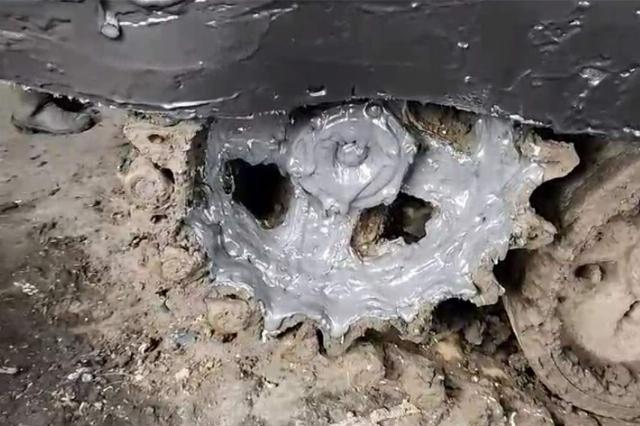
Photo: NTI Center "Digital Materials Science: New materials and Substances" Bauman Moscow State Technical University
Image source: iz.ru
— Military equipment, if you look at it, was not created with thermal insulation so that the enemy would notice it less. But this kind of capes makes potential targets less contrasting, that is, they will merge with the temperature range of the earth and cease to be targets," he believes.
Work on reducing the illumination of equipment on thermal imagers has been going on for a long time, various means like camouflage nets are being developed, which should reduce detectability, Yuri Lyamin recalled.
— The issue of cost is very important. It is desirable that such means of protection be cheap. Expensive material can be good, but it cannot be produced in large quantities and used en masse, accordingly, it is of little use," he concluded.
Earlier, specialists from the Russian company HiderX talked about working on a camouflage suit that blurs the silhouette of the wearer and makes it completely invisible to enemy thermal imaging equipment.
Julia Leonova
Denis Gritsenko
Maria Nedyuk
